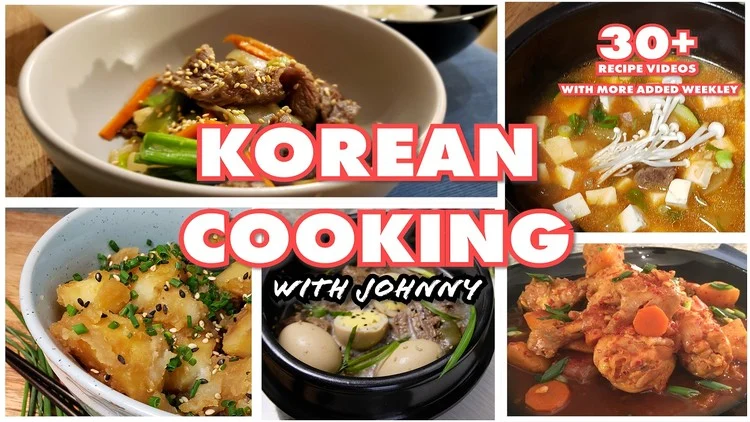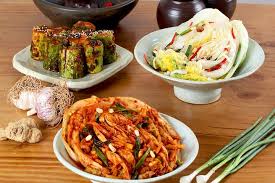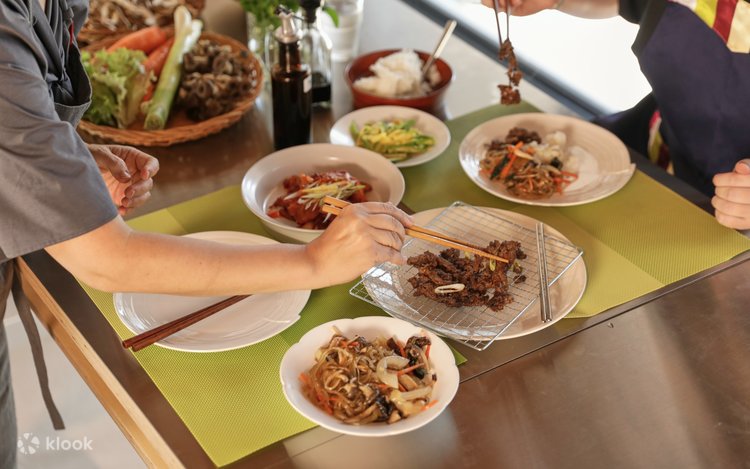Korean cooking cuisine is a vibrant tapestry of bold flavors, colorful presentations, and cultural traditions that have captivated food lovers worldwide. From the spicy, tangy kick of kimchi to the savory-sweet allure of bulgogi, Korean dishes offer something for every palate. At https://tastetrove.net/ , we’re dedicated to helping home cooks explore global cuisines, and this guide is your gateway to mastering Korean cooking, whether you’re a beginner or a seasoned chef. With recipes tailored to various skill levels, practical tips, and essential techniques, you’ll be creating authentic Korean meals in no time. Let’s dive into five irresistible recipes, complete with internal and external resources to elevate your culinary journey.
The Allure of Korean Cuisine
Korean food is more than just a meal—it’s an experience that balances spicy, sweet, sour, and umami flavors with fresh vegetables, fermented ingredients, and tender proteins. According to The Korea Society, Korean cuisine emphasizes harmony, often featuring a variety of banchan (side dishes) alongside a main dish to create a well-rounded dining experience. Whether you’re drawn to the fiery heat of gochujang-based dishes or the subtle elegance of a cucumber salad, Korean cooking is accessible and adaptable for all skill levels.
This article includes recipes for beginners, intermediate cooks, and advanced chefs, ensuring everyone can enjoy the magic of Korean cuisine. We’ll also share pantry essentials, cooking techniques, and product recommendations to make your journey seamless. For more quick Korean dishes, check out our Delicious Korean Recipes: From Kimchi to Bulgogi in 30 Minutes.
Korean Cooking is a vibrant culinary tradition that emphasizes bold flavors and fresh ingredients. In Korean Cooking, dishes like kimchi showcase fermented vegetables, delivering a tangy, spicy kick. Korean Cooking often incorporates gochujang, a red chili paste, to add depth to stews and marinades. Techniques in Korean Cooking, such as banchan preparation, create an array of small side dishes served alongside rice. The art of Korean Cooking balances sweet, savory, and spicy elements, making it a globally celebrated cuisine.
Recipe 1: Beginner-Friendly Korean Cucumber Salad (Oi Muchim)
Perfect for novice cooks, this refreshing cucumber salad is a classic banchan that’s quick, easy, and bursting with flavor. It’s an ideal starting point for exploring Korean cuisine.
Ingredients (Serves 4 as a side)
- 2 Persian cucumbers, thinly sliced
- 1 tsp kosher salt
- 1 tbsp gochugaru (Korean red pepper flakes, available at HMart)
- 1 tbsp rice vinegar
- 1 tsp sesame oil
- 1 tsp sugar
- 1 tsp minced garlic
- 1 green onion, chopped
- 1 tsp toasted sesame seeds
Instructions
- Salt the Cucumbers: Toss cucumber slices with salt in a bowl and let sit for 5 minutes. Squeeze out excess water.
- Make the Dressing: In a small bowl, mix gochugaru, rice vinegar, sesame oil, sugar, and garlic.
- Combine and Serve: Add cucumbers and green onions to the dressing, toss to coat, and sprinkle with sesame seeds. Serve immediately.
Skill Level: Beginner
This recipe requires minimal ingredients and no cooking, making it perfect for those new to Korean flavors. For more banchan ideas, explore our Korean Banchan Recipes.
Why It Works
The crisp cucumbers paired with a spicy-tangy dressing create a refreshing side dish that complements heavier Korean dishes. Learn more about banchan at Korean Bapsang.

Recipe 2: Beginner-Friendly Korean Egg Roll (Gyeran Mari)
Gyeran mari, a rolled omelette, is a simple yet flavorful dish often served as banchan or a snack. It’s a great way to practice basic knife and pan skills.
Ingredients (Serves 2–3)
- 4 large eggs
- 1 tbsp water
- 1 tsp soy sauce
- 1 green onion, finely chopped
- 1/4 cup shredded carrot (optional)
- 1 tbsp vegetable oil
- Salt to taste
Instructions
- Prepare the Mixture: Whisk eggs, water, soy sauce, green onion, and carrot (if using) in a bowl. Add a pinch of salt.
- Cook the Omelette: Heat a nonstick skillet over medium-low heat and add oil. Pour in a thin layer of egg mixture, swirling to coat the pan. Cook for 1–2 minutes until set but not browned.
- Roll: Fold one edge of the egg over and roll it tightly, adding more egg mixture to the pan as you roll. Repeat until all egg is used.
- Slice and Serve: Let cool slightly, then slice into 1-inch pieces. Serve warm or at room temperature.
Skill Level: Beginner
This recipe introduces basic pan techniques and is forgiving for first-time cooks. Pair it with our Quick Korean Banchan Recipes.
Why It Works
Gyeran mari is versatile, kid-friendly, and a great way to use leftover vegetables. For a video tutorial, visit Maangchi.
Recipe 3: Intermediate Korean Bibimbap Bowl
Bibimbap, a colorful rice bowl with assorted toppings and a spicy sauce, is a crowd-pleaser that introduces intermediate cooking techniques like sautéing and sauce-making.
Ingredients (Serves 2)
- 2 cups cooked short-grain rice
- 1/2 lb ground beef or tofu
- 2 tbsp soy sauce
- 1 tbsp sesame oil
- 1 cup spinach, blanched
- 1 carrot, julienned
- 1 small zucchini, julienned
- 1/2 cup bean sprouts, blanched
- 2 eggs, fried (optional)
- 2 tbsp gochujang
- 1 tsp sugar
- 1 tsp sesame seeds
- Kimchi (store-bought or from our Quick Kimchi Recipe)
Instructions
- Cook the Protein: In a skillet, cook ground beef or tofu with soy sauce and 1/2 tbsp sesame oil over medium heat for 5–7 minutes until browned. Set aside.
- Sauté Vegetables: In the same skillet, add remaining sesame oil and sauté carrots, zucchini, and bean sprouts separately (1–2 minutes each). Season lightly with salt.
- Make the Sauce: Mix gochujang, sugar, and a splash of water in a small bowl.
- Assemble: Divide rice between two bowls. Arrange beef/tofu, spinach, carrots, zucchini, bean sprouts, and kimchi in sections over the rice. Top with a fried egg if desired. Drizzle with sauce and sprinkle with sesame seeds.
Skill Level: Intermediate
This recipe involves multiple components and light cooking, perfect for those ready to step up their skills. For more bowl ideas, see our Healthy Bowl Recipes.
Why It Works
Bibimbap’s mix-and-match nature makes it customizable, and the gochujang sauce adds bold flavor. Learn more about bibimbap at Serious Eats.
Recipe 4: Intermediate Korean Spicy Tteokbokki (Rice Cakes)
Tteokbokki, cylindrical rice cakes in a spicy red sauce, is a beloved street food that challenges intermediate cooks with sauce balancing and texture control.
Ingredients (Serves 2–3)
- 1 lb cylindrical rice cakes (tteok, available at Amazon)
- 2 cups water
- 2 tbsp gochujang
- 1 tbsp gochugaru
- 1 tbsp soy sauce
- 1 tsp sugar
- 1 tsp minced garlic
- 1/2 cup fish cakes, sliced (optional)
- 1 green onion, chopped
- 1 tsp sesame seeds
Instructions
- Prep the Tteok: If using frozen rice cakes, soak in warm water for 10 minutes, then drain.
- Make the Sauce: In a large pan, combine water, gochujang, gochugaru, soy sauce, sugar, and garlic. Bring to a simmer over medium heat.
- Cook: Add rice cakes and fish cakes (if using). Stir occasionally and cook for 8–10 minutes until the sauce thickens and coats the tteok.
- Serve: Garnish with green onions and sesame seeds. Serve hot.
Skill Level: Intermediate
Balancing the sauce’s thickness and spice level requires some finesse, making this a great step up from beginner recipes. For more street food ideas, visit our Street Food Favorites.
Why It Works
The chewy tteok and spicy-sweet sauce create a comforting dish that’s a Korean classic. Check out My Korean Kitchen for tteokbokki variations.
Recipe 5: Advanced Korean Kimchi Jjigae (Kimchi Stew)
Kimchi jjigae, a hearty stew made with fermented kimchi, is a flavorful challenge for advanced cooks, requiring layering of flavors and precise heat control.
Ingredients (Serves 4)
- 2 cups kimchi (preferably aged, or use our Quick Kimchi Recipe)
- 1/2 lb pork belly or shoulder, thinly sliced
- 1/2 block firm tofu, sliced into 1/2-inch pieces
- 1 small onion, sliced
- 2 green onions, chopped
- 1 tbsp gochugaru
- 1 tbsp gochujang
- 1 tbsp soy sauce
- 1 tsp sesame oil
- 1 tsp minced garlic
- 3 cups water or anchovy stock
- 1 tsp sugar (optional)
- 1 tbsp vegetable oil
Instructions
- Cook the Base: In a medium pot or ttukbaegi (earthenware pot, available at HMart), heat vegetable oil over medium heat. Add pork and cook for 3–4 minutes until lightly browned.
- Add Kimchi and Seasonings: Stir in kimchi, gochugaru, gochujang, soy sauce, sesame oil, and garlic. Cook for 2–3 minutes to release flavors.
- Simmer: Add water or anchovy stock and bring to a boil. Reduce to a simmer and cook for 10 minutes.
- Add Tofu and Onion: Add tofu and onion slices, simmering for another 5–7 minutes until flavors meld. Taste and adjust with sugar if needed.
- Serve: Garnish with green onions and serve hot with rice.
Skill Level: Advanced
This recipe requires balancing bold flavors and managing heat to avoid overcooking the tofu or pork. For more stew recipes, check our Global Soup Collection.
Why It Works
The aged kimchi and pork create a rich, umami-packed broth that’s both comforting and complex. For a detailed guide, visit Beyond Kimchee.
Essential Korean Cooking Techniques
- Fermentation Basics: Kimchi and gochujang rely on fermentation for depth. Beginners can start with quick kimchi, while advanced cooks can try traditional fermentation (see Korean Bapsang’s Fermentation Guide).
- Slicing and Prep: Thin, uniform slices (e.g., for bulgogi or banchan) ensure even cooking. A mandoline or sharp knife is key.
- Balancing Flavors: Korean cuisine thrives on harmony. Taste and adjust for spice, sweetness, and saltiness, especially in sauces.
- High-Heat Cooking: Bulgogi and stir-fries benefit from quick, high-heat cooking to caramelize flavors without overcooking.
For more techniques, explore our Cooking Tips Hub.

Pantry Staples and Tools
To master Korean cooking, stock these essentials:
- Gochujang and Gochugaru: Sempio Gochujang and Taekyung Gochugaru are top picks (Amazon).
- Sesame Oil: Kevin’s Choice Premium Sesame Oil for pure flavor (Kevin’s Choice).
- Rice Cooker: Cuckoo 6-Cup Micom for perfect rice (HMart).
- Ttukbaegi: Crazy Korean Cooking earthenware pot for stews (Amazon).
See our Korean Pantry Essentials for a full list.
Tips for Success Across Skill Levels
- Beginners: Start with simple recipes like oi muchim or gyeran mari to build confidence. Pre-chopped ingredients save time.
- Intermediate Cooks: Experiment with multi-component dishes like bibimbap or tteokbokki to hone multitasking skills.
- Advanced Cooks: Challenge yourself with kimchi jjigae or homemade gochujang to master flavor layering and fermentation.
- All Levels: Keep a well-stocked pantry and taste as you go to adjust flavors.
For more inspiration, explore our Asian Cuisine Collection or Maangchi’s Recipe Index.
Bringing Korean Cuisine to Your Table
Mastering Korean cooking is about embracing bold flavors and simple techniques, whether you’re tossing a quick cucumber salad or simmering a rich kimchi stew. These recipes cater to every skill level, making Korean cuisine accessible and fun. At TasteTrove, we’re here to support your culinary adventures—share your creations with us on X and explore more recipes in our Global Cuisine Hub.
Happy cooking, and enjoy your journey into Korean cuisine!
Korean Cooking FAQs and Recommended Products
Korean cuisine, with its bold flavors and vibrant dishes, is a favorite among home cooks worldwide. Whether you’re just starting with simple banchan or tackling complex stews like kimchi jjigae, questions often arise about ingredients, techniques, and tools. This guide answers frequently asked questions (FAQs) about Korean cooking and recommends top products to help you master recipes from our article, Master Korean Cooking: Irresistible Recipes for Every Skill Level, on TasteTrove. Designed for all skill levels, this resource will equip you to create authentic Korean dishes at home.
Frequently Asked Questions About Korean Cooking
1. What are the must-have ingredients for Korean cooking?
Korean cuisine relies on a core set of ingredients to achieve its signature flavors:
- Gochujang (Korean Red Pepper Paste): A fermented paste that adds heat, sweetness, and umami to dishes like bibimbap and tteokbokki.
- Gochugaru (Korean Red Pepper Flakes): Essential for kimchi and spicy stews, providing vibrant color and heat.
- Sesame Oil: Delivers a nutty aroma for marinades, stir-fries, and banchan.
- Soy Sauce: Adds savory depth; Korean or gluten-free versions work well.
- Rice Vinegar: Used in salads like oi muchim for a tangy finish.
- Garlic and Ginger: Fresh aromatics that enhance nearly every dish.
For a complete list, see our Korean Pantry Essentials.
2. How can I adapt Korean recipes for vegetarian or vegan diets?
Many Korean dishes are adaptable:
- Replace fish sauce with soy sauce or vegan fish sauce in kimchi or stews (try our Kimchi Jjigae recipe).
- Use tofu, mushrooms, or tempeh instead of meat in bibimbap or bulgogi. Our Vegan Korean Recipes has more ideas.
- Dishes like oi muchim (cucumber salad) and gyeran mari (omit for vegan) are naturally vegetarian or easily modified.
Learn more about vegan Korean cooking at The Korean Vegan.
3. How do I make Korean dishes quickly for busy schedules?
To save time:
- Use pre-sliced meats or tofu for dishes like bibimbap or tteokbokki.
- Buy pre-washed vegetables or use a mandoline for quick prep.
- Opt for store-bought kimchi or fish cakes to streamline recipes.
- Prepare sauces or marinades in advance and refrigerate.
Our Delicious Korean Recipes: From Kimchi to Bulgogi in 30 Minutes offers time-saving tips.
4. Where can I source authentic Korean ingredients?
Authentic ingredients are key to Korean cooking:
- Korean Markets: HMart or local Asian grocery stores stock fresh tteok, gochujang, and banchan ingredients.
- Online Retailers: HMart and Kevin’s Choice offer high-quality Korean products.
- Supermarkets: Some stores like Whole Foods or Trader Joe’s carry gochujang, but check labels for authenticity. See Bon Appétit’s guide for tips on spotting quality products.
5. Is making kimchi at home complicated?
Not necessarily! While traditional kimchi requires days of fermentation, quick versions take under 30 minutes. The process involves salting cabbage and mixing it with a paste of gochugaru, garlic, and fish sauce (or soy sauce for vegan). Try our Quick Kimchi Recipe or explore traditional methods at Maangchi.
6. What’s the difference between gochujang and gochugaru?
- Gochujang: A thick, fermented paste made from red chili peppers, glutinous rice, and soybeans, used in sauces and marinades.
- Gochugaru: Dried red pepper flakes, non-fermented, used for heat and color in kimchi and stews.
Both are vital for authenticity. Learn more at Kimchimari.
7. Can I substitute ingredients in Korean recipes?
Yes, with caution:
- Gochujang: Sriracha with a touch of honey can substitute, but it lacks the same depth.
- Gochugaru: Crushed red pepper flakes work but are hotter, so use less.
- Fish Sauce: Soy sauce or vegan fish sauce is a good alternative.
- Asian Pear: Apple juice or kiwi can replace pear in marinades like bulgogi.
Check our Cooking Tips Hub for more substitution ideas.
8. What tools do I need for Korean cooking?
Basic kitchen tools work, but these enhance authenticity:
- Nonstick Skillet or Wok: For stir-frying or searing (e.g., bibimbap toppings).
- Mandoline: For thin, uniform vegetable slices for banchan.
- Rice Cooker: For perfect short-grain rice, a Korean staple.
- Ttukbaegi (Earthenware Pot): Ideal for stews like kimchi jjigae.
Recommended Products for Korean Cooking
These products, curated for quality and authenticity, will help you recreate recipes from Master Korean Cooking: Irresistible Recipes for Every Skill Level.
1. Gochujang (Korean Red Pepper Paste)
- Product: Sempio Gochujang
- Why: Heritage-certified, additive-free, with authentic heat and sweetness.
- Use: Essential for bibimbap sauce, tteokbokki, or kimchi jjigae.
- Where to Buy: Amazon or HMart.
- Price: ~$8–12 for 500g.
2. Gochugaru (Korean Red Pepper Flakes)
- Product: Taekyung Coarse Gochugaru
- Why: Sun-dried in Korea for vibrant color and balanced heat, perfect for kimchi.
- Use: Use in our Quick Kimchi Recipe or oi muchim.
- Where to Buy: Kevin’s Choice or Amazon.
- Price: ~$10–15 for 1 lb.
3. Sesame Oil
- Product: Kevin’s Choice Premium Sesame Oil
- Why: Low-temperature roasted for a pure, nutty flavor, free of harmful additives.
- Use: Drizzle over gyeran mari or use in cucumber salad.
- Where to Buy: Kevin’s Choice or HMart.
- Price: ~$12–18 for 16 oz.
4. Korean Soy Sauce
- Product: Sempio Jin Gold Soy Sauce
- Why: Naturally brewed for rich umami, ideal for Korean recipes.
- Use: Perfect for gyeran mari or bibimbap marinades.
- Where to Buy: Amazon or Asian markets.
- Price: ~$6–10 for 850ml.
5. Cylindrical Rice Cakes (Tteok)
- Product: HMart Fresh Tteok
- Why: Freshly made for the chewy texture needed for tteokbokki.
- Use: Try in our Spicy Tteokbokki Recipe.
- Where to Buy: HMart or local Korean markets.
- Price: ~$5–8 for 1 lb.
6. Rice Cooker
- Product: Cuckoo 6-Cup Micom Rice Cooker
- Why: Consistently delivers fluffy short-grain rice, a must for bibimbap.
- Use: Pairs with any rice-based Korean dish.
- Where to Buy: Amazon or HMart.
- Price: ~$80–120.
7. Mandoline Slicer
- Product: OXO Good Grips Handheld Mandoline
- Why: Adjustable for thin slices, saving prep time for banchan.
- Use: Slice cucumbers for oi muchim or vegetables for bibimbap.
- Where to Buy: Amazon.
- Price: ~$20–30.
8. Ttukbaegi (Earthenware Pot)
- Product: Crazy Korean Cooking Ttukbaegi
- Why: Retains heat for authentic stews like kimchi jjigae.
- Use: Ideal for our Kimchi Jjigae Recipe.
- Where to Buy: Amazon or HMart.
- Price: ~$15–25.

Tips for Using These Products
- Storage: Keep gochujang and gochugaru in airtight containers in the fridge; store sesame oil in a cool, dark place.
- Authenticity: Choose Korean-made products for true flavor, as some generic brands use additives.
- Experimentation: Adjust spice levels gradually with gochujang and gochugaru to suit your taste.
For more Korean cooking resources, visit My Korean Kitchen or Beyond Kimchee. Share your dishes with us on X and join the TasteTrove community!